The Art of the Post: From the Pages of the Post to Museum Walls
Read all of art critic David Apatoff’s columns here.
The illustrations that appeared in The Saturday Evening Post were intended to last until the next issue came out. The Post was a “periodical,” designed only to fill a period of time until it was updated by a newer issue containing more current information, fashion trends, and merchandise for sale.
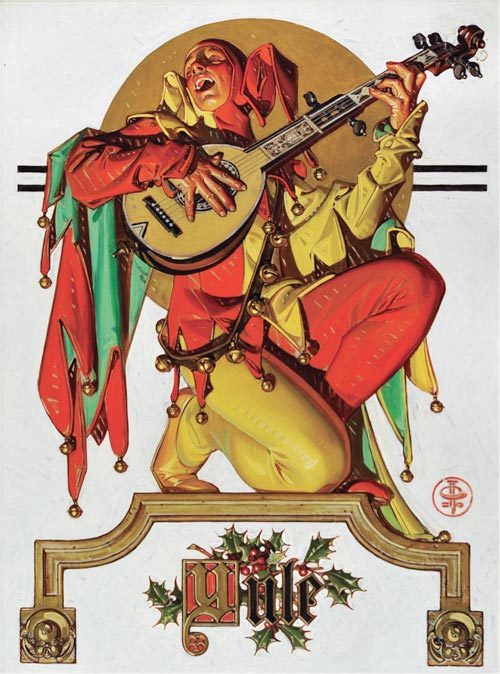
Generations of illustrators created beautiful pictures to fill the Post and other magazines, but it was always understood that they were creating temporary art; one day that thin magazine paper would turn brittle and yellow with age, and eventually crumble and return to mother nature.
It took a while for experts to recognize that illustrations had enduring value, but once Norman Rockwell’s 1951 cover for the Post, “Saying Grace,” sold for $46 million, even the most stubborn nay-sayers realized that this “temporary” art form was worth preserving.

Today illustration art is being rescued and conserved by experts, to take its rightful place on museum walls.
During the decades when Rockwell and other illustrators were exiled from “fine” art, thousands of drawings and paintings were saved from the trash heap by a hardy band of collectors and artists who had the courage to ignore the condescension of highbrow art critics. These collectors weren’t intimidated by labels. Instead, they collected for the best possible reason: they loved the images. Their love of the pure art made them fearless, and they helped preserve the art form in private collections while the experts slowly had a change of heart.
One such collector was Andrew Sordoni III, who started out as a young boy smitten by the art in Sunday comic strips. He liked Dick Tracy and Krazy Kat and a handful of other strips that were delivered to his house in the funny papers. Fortunately, Sordoni’s mother was a fashion illustrator, and she taught him to respect the craft of good drawing. For many years “craftsmanship” was a dirty word in the fine arts community, but it served as a polar star for Sordoni’s collecting. Soon Sordoni began collecting unfashionable illustrators such as Maxfield Parrish. Today Parrish paintings have sold for millions of dollars.
 |
 |
|
U.S. postage stamps featuring comics Dick Tracy and Krazy Kat. (Shutterstock) |
|
A lifetime of collecting has come to fruition in an opening this month of a large exhibition of American illustration art at the Sordoni Art Gallery in Wilkes-Barre, Pennsylvania.

The show, which features one of the great private collections of American illustration, will run from April 7 to May 20, 2018. It was curated by Stanley I. Grand, Ph.D., a professor of art history and expert on the allegorical engravings from Giovanni Battista Ferrari’s De Florum Cultura.
The Sordoni show includes 135 works of art, including a number of illustrations that were originally seen in the pages of the Post, but which now can be seen as the artist created them.


The collection reflects the personal taste of Sordoni, who collected what was once ignored as “lowbrow art.” As the catalog notes, “Andrew found his own way and collected works that were considered of lesser importance at the time, but are now highly regarded both in market and aesthetic terms.”
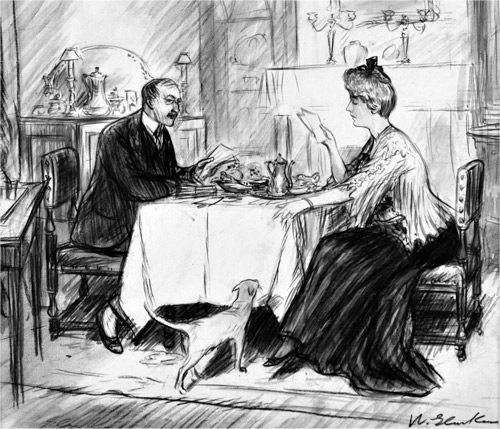

The art in the exhibit includes work by famed illustrators such as Rockwell, Parrish, and N.C. Wyeth. The substantial catalog accompanying the show is a prime example of how critical attention surrounding the field of illustration art has evolved from initial skepticism to serious study by respected academics and biographers who are devoting years and substantial critical analysis to multiple biographies.
While Rockwell was a groundbreaker in being accepted by the “fine” art community, other illustrators whose work appeared in the Post are hot on Rockwell’s heels. Artists such as J.C. Leyendecker, Dean Cornwell, Bernie Fuchs, Robert Fawcett, and others all have their own coffee table art books now, and the value of their original work at auction has increased dramatically. While illustration art was once auctioned in a separate category, much of it is now commingled and sold interchangeably with traditional American “fine” art.
Cartoons: Caution, Cartoonists At Work!
Some of our favorite cartoons from the pages of our magazine with a shirking-work theme:
“Well, it looks like somebody is catching up on his paperwork!”
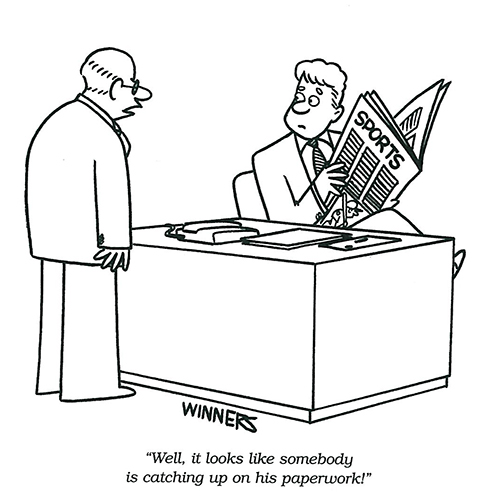
Don’t you hate when the boss shows up at an inopportune time? I think they have radar for honing in on this sort of thing. The radar doesn’t work when you’re plugging away, just when you relax (okay, goof off).
“Don’t play games with me, Henderson. I know you can hear me. Get on the red-eye back tonight. We need you for the presentation in the morning!”
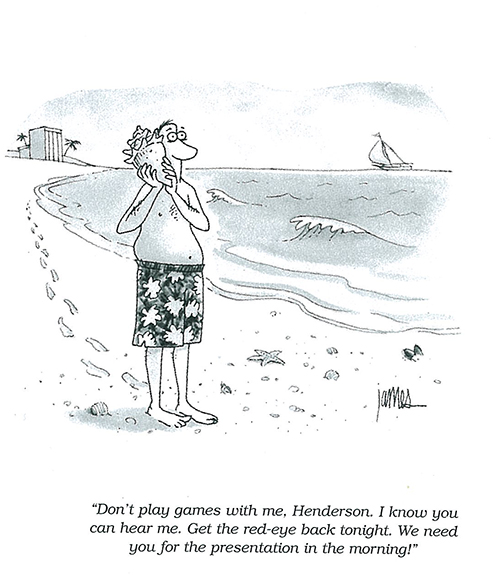
Whoa—talk about radar. Don’t think you can get out of work by going on vacation, either. I knew I shouldn’t have picked up that seashell!
“I heated the thermometer next to a light bulb so my wife wouldn’t send me to work.”

It isn’t just the boss you have to work around sometimes. A day off with the dog, TV, and a bowl of popcorn is just the ticket—even if one has to be devious to pull it off.
“I’ve decided to get up and go to work after all. I’ll call in sick some other day when I feel better.”
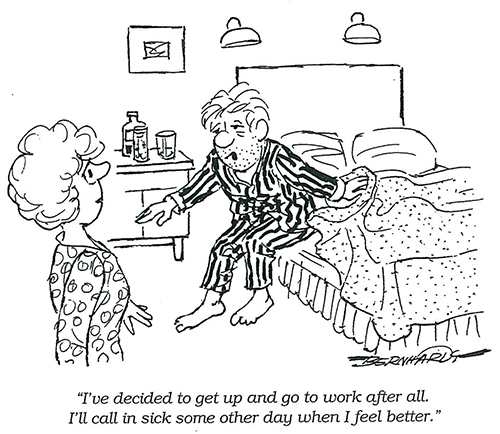
We are an odd species: work when we don’t feel well and stay home when we do. I guess this guy didn’t want to waste a perfectly good sick day.
“His new motto is never put off until tomorrow what you might be able to get out of altogether.”

Some folks just have it down to an art form.
“Could you at least burn a candle at one end?”

Of course, if you really want to master the art of getting out of work, just study a teenager. Have a safe and happy (Getting-Out-of) Labor Day!